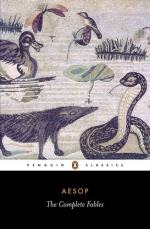|
This section contains 1,456 words (approx. 5 pages at 300 words per page) |

|
SOURCE: G. K. Chesterton, in an introduction to Aesop's Fables, translated by V. S. Vernon Jones, Doubleday Page & Co., 1912, pp. v-xi.
In the following excerpt, Chesterton describes each animal species in Aesop's fables as a symbol of a single fixed meaning, which enables the interaction of animal figures to convey its timeless message.
Æsop embodies an epigram not uncommon in human history; his fame is all the more deserved because he never deserved it. The firm foundations of common sense, the shrewd shots at uncommon sense, that characterise all the Fables, belong not to him but to humanity. In the earliest human history whatever is authentic is universal: and whatever is universal is anonymous. In such cases there is always some central man who had first the trouble of collecting them, and afterwards the fame of creating them. He had the fame; and, on the whole, he earned...
|
This section contains 1,456 words (approx. 5 pages at 300 words per page) |

|


